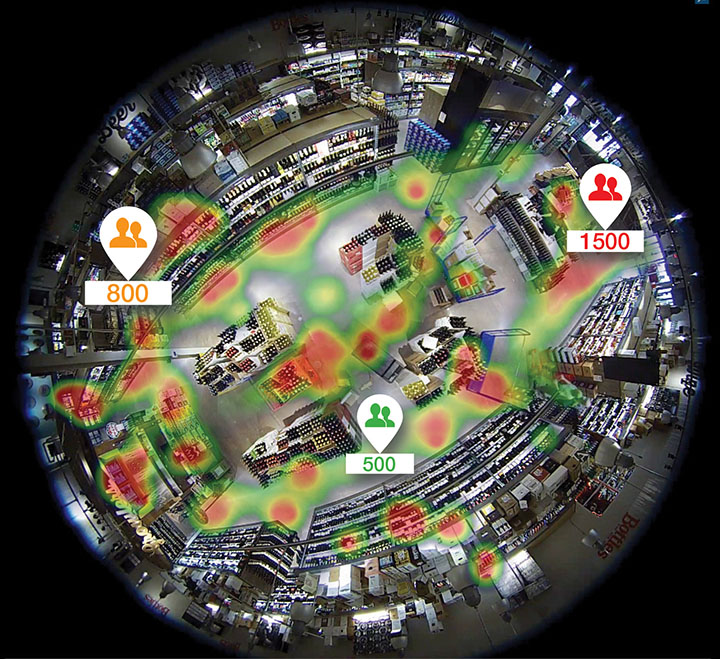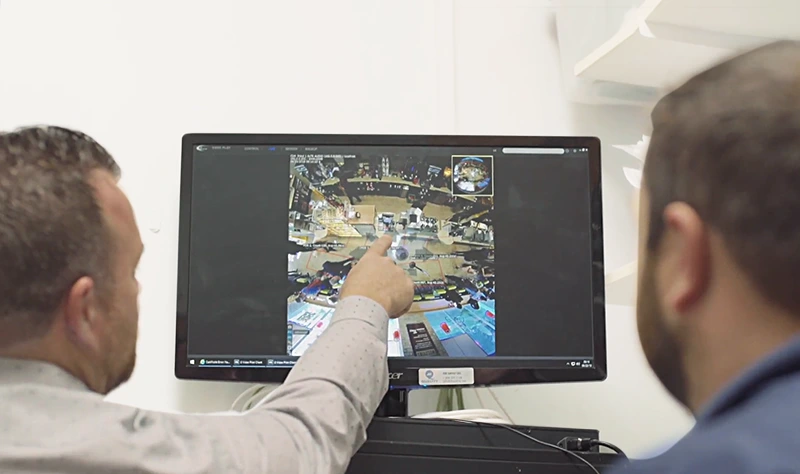The future of business intelligence: leveraging video analytics to drive success
Discover the power of video analytics in business intelligence and how it can help drive success. Learn how businesses can leverage video analytics to make informed decisions, improve customer experience, and increase operational efficiency. Explore real-world examples and best practices for implementing video analytics while maintaining data privacy and security. Discover the emerging trends and technologies that promise to revolutionize decision-making across industries.
Video analytics or Business Intelligence (BI) systems utilizing computer vision is a technology that has been around for several years, but it is only in recent times that it has become more accessible to businesses of all sizes. This technology allows companies and organizations to capture, analyze, and interpret data from video feeds in real time, providing insights into customer behavior, employee performance, and operational efficiency.
As the leading Business Intelligence and security solutions provider, i3 International understands the importance of video analytics and business intelligence for businesses across different industries. In this blog post, we will explore the benefits of BI for decision-making and how i3 International can help businesses unlock the full potential of this technology.
Understanding video analytics
Video analytics is a technology that uses computer vision and machine learning to analyze video footage. It can detect and track objects, people, and events in real-time and provide valuable data and insights to inform decision-making. Video analytics can help businesses in various ways, including:
- Customer behavior analysis: Video analytics can help businesses understand how customers interact with their products or services. For instance, by analyzing the foot traffic in a retail store, businesses can identify the most popular products and optimize their layout and promotions to increase sales.
- Operational efficiency: Video analytics can help businesses monitor their operational processes and identify inefficiencies. For instance, by analyzing the production process in a manufacturing plant, businesses can identify bottlenecks and optimize their workflow to reduce costs and increase productivity, or a QSR utilizing video analytics to identify bottlenecks in their drive-thru and improve the Speed of service.
- Security: Video analytics can help businesses monitor their premises and detect potential security threats. For instance, businesses can identify suspicious behavior and take appropriate action to prevent theft or vandalism by analyzing the video feeds in a parking lot.

The benefits of video-integrated business intelligence for decision making
Video analytics can provide several benefits for decision-making, including increased accuracy, efficiency, and scalability. Businesses can save time and resources and make more informed decisions by automating analyzing video footage. For instance, i3 International's video analytics solutions can help businesses:
- Improve customer experience: Businesses can optimize their store layout and staffing by analyzing customer traffic patterns to provide a better shopping experience.
- Reduce operational costs: Businesses can reduce operating costs and increase productivity by identifying inefficiencies in their processes.
- Enhance security: By detecting potential security threats, businesses can take immediate action to prevent losses and keep their premises secure.
Real-world examples of video analytics in action
Several real-world examples of businesses and organizations that have successfully used video analytics to make better decisions. For instance, i3 International has helped businesses in the following ways:
- Retail: A significant retailer used video analytics to analyze customer traffic patterns and optimize store layouts, resulting in a 10% increase in sales. Read Success Stories
- Manufacturing: A significant manufacturer used video analytics to monitor production processes and identify bottlenecks, resulting in a 15% increase in productivity. Read Success Stories
- Healthcare: A significant healthcare provider used video analytics to monitor patient safety and improve their quality of care. Read Success Stories
- Restaurant: Over 15000 QSR operators in North America have invested in i3 systems to increase their Speed of service, optimize labor, and increase operational efficiency overall. Read Success Stories
Best practices for implementing video analytics
Implementing video analytics can be a complex process, but there are some best practices that businesses and organizations can follow to ensure success. First, it's crucial to choose the right technology. Different video analytics solutions offer various features and capabilities, and selecting one that aligns with your business needs and goals is essential.
Next, it's essential to set up the proper infrastructure. Video analytics requires robust hardware and software infrastructure, including cameras, servers, and data storage solutions. It's also essential to ensure that your network infrastructure can handle the increased data traffic generated by video analytics.

Photo: i3 Staff training on a new computer system
Finally, training staff on effectively using the technology is crucial. While video analytics can provide valuable insights and data, it's up to the people using the technology to translate that information into actionable decisions. Proper training can ensure that staff members are comfortable and proficient with video analytics, leading to more informed decision-making.
Maintaining data privacy and security
While video analytics offers significant benefits for decision-making, it's essential to maintain data privacy and security when using this technology. Video footage contains sensitive information, and businesses and organizations must take steps to protect that information.
One way to maintain data privacy and security is to implement video encryption. Encryption can protect video footage from unauthorized access and ensure only authorized personnel can access the information.
Another important consideration is data storage. Storing video footage on secure servers and backing up that data regularly can help prevent data loss or theft.
Finally, it's essential to establish clear policies and procedures for using video analytics. These policies should outline who has access to video footage, how that footage can be used, and how long that footage can be retained.
By establishing clear guidelines and ensuring that all personnel understand and adhere to those guidelines, businesses and organizations can maintain data privacy and security when using video analytics.
The future of video analytics and decision-making
The future of video analytics is bright, with emerging trends and technologies that promise to revolutionize decision-making across industries. One significant trend is integrating artificial intelligence (Ai) and predictive analytics into video analytics solutions.
Ai can help businesses and organizations anticipate customer behavior and identify potential issues before they arise, allowing for proactive decision-making.
Another emerging trend is the development of real-time analytics capabilities. Real-time analytics can provide businesses and organizations with immediate insights into customer behavior, employee performance, and operational efficiency. This information can help businesses and organizations make decisions quickly, leading to better outcomes.
Although other companies claiming to have artificial intelligence analytics pass "motion-sensing" as Ai, customers need to ensure they are not being duped when opting for this option. At i3, we have continued our algorithm training for over 15 years, this continues, making us one of the few companies which boast maximum accuracy with actual and real Artificial Intelligence using the YOLO (You Only Look Once) model.
Finally, the continued development of Ai-based video analytics technology will make it even more accurate and efficient, allowing businesses and organizations to make better decisions. Improved object detection and tracking capabilities, enhanced data visualization tools, and more robust machine learning algorithms will enable video analytics and business intelligence systems to provide more valuable insights and data.
Conclusion
Video analytics is a powerful tool that can help businesses and organizations make better decisions. By analyzing real-time video footage, businesses and organizations can gain valuable insights into customer behavior, employee performance, and operational efficiency.
Implementing video analytics requires careful consideration of the technology, infrastructure, and personnel needed to make it successful.
Maintaining data privacy and security is also essential when using video analytics. Clear policies and procedures must be established to ensure that video footage is stored securely and accessed only by authorized personnel.
The future of video analytics/Business Intelligence utilizing computer vision is bright, with emerging trends and technologies promising to revolutionize decision-making across industries. By staying up to date with these trends and technologies and following best practices for implementing video analytics, businesses and organizations can unlock the full potential of this powerful tool and make better decisions than ever before.
